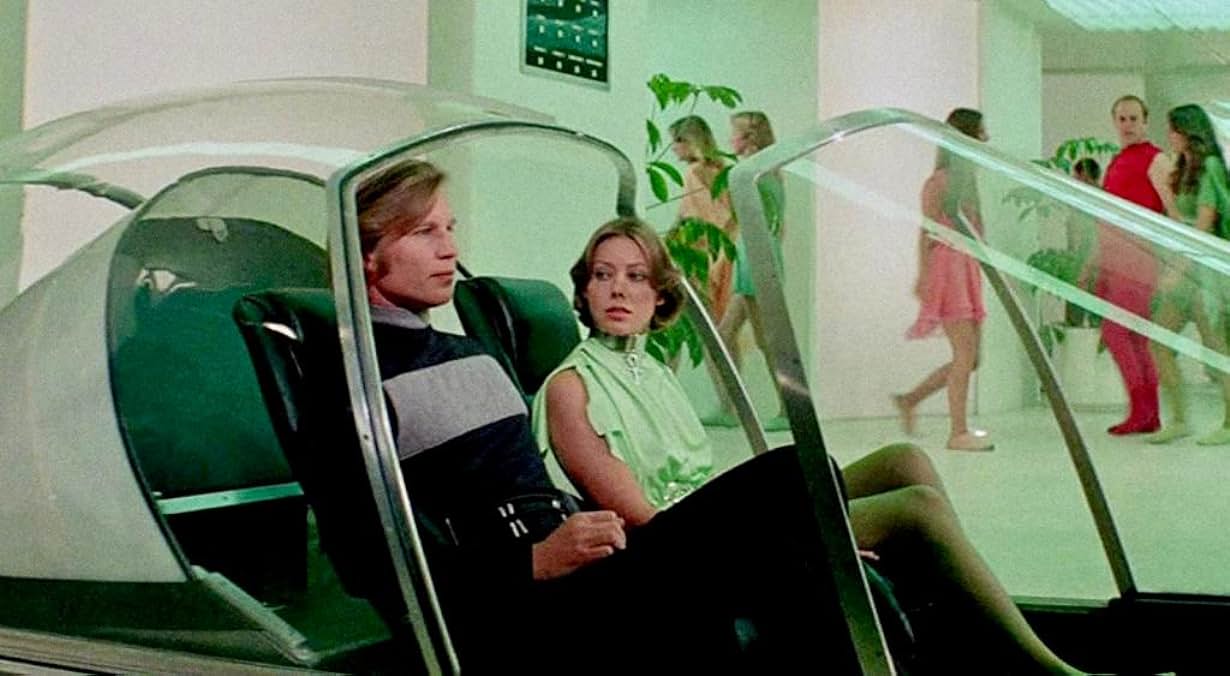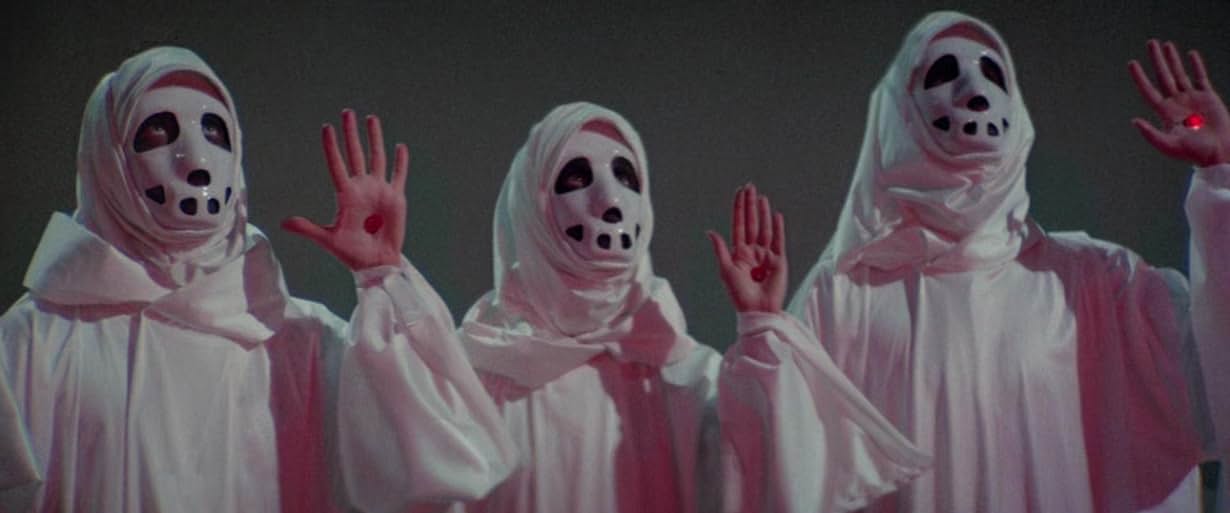Logan’s Run ( 1976 )

“Logan’s Run” is a 1976 science fiction film directed by Michael Anderson and based on the 1967 novel of the same name by William F. Nolan and George Clayton Johnson. The film stars Michael York, Jenny Agutter, Richard Jordan, Roscoe Lee Browne, Farrah Fawcett, and Peter Ustinov. It explores themes of youth, hedonism, control, and the human desire for freedom in a dystopian future.
The story is set in the 23rd century, in a domed city where humans live a hedonistic lifestyle devoid of hardship. The city’s society is sustained by advanced technology and is governed by a strict rule: everyone must undergo a process called “Carrousel” at the age of 30, ostensibly to be reborn, though in reality, it results in their death. This rule ensures population control and resource management.

Logan 5 (Michael York) is a Sandman, an enforcer tasked with hunting down “Runners”—those who attempt to escape the city’s fate by fleeing to a rumored sanctuary. His life takes a dramatic turn when he is ordered by the city’s central computer to go undercover and find this sanctuary. During this mission, the computer accelerates Logan’s life clock, a crystal embedded in the palm of each citizen’s hand that changes color as they approach their 30th birthday, indicating that Logan has only four years left to live.
Logan’s assignment brings him into contact with Jessica 6 (Jenny Agutter), a member of an underground resistance movement that believes in the sanctuary’s existence. Skeptical at first, Jessica becomes Logan’s ally as they flee the city together. Along their journey, they encounter a series of challenges and dangers, including encounters with robotic enforcers and hostile environments outside the city.

As Logan and Jessica venture further, they discover the ruins of Washington, D.C., and meet an old man (Peter Ustinov), who lives with his many cats in the dilapidated remains of the Capitol. The old man, who has lived far beyond the age of 30, reveals to Logan and Jessica the truths about aging and the lies perpetuated by their society. This encounter profoundly affects Logan, leading him to question everything he has known.
Determined to free their society from the oppressive rule of the Carrousel, Logan and Jessica return to the domed city with the old man. They expose the truth about the outside world and the natural process of aging, leading to a rebellion among the citizens. The central computer, unable to reconcile the newfound information with its programmed directives, malfunctions and self-destructs, causing the domed city to collapse.

In the film’s conclusion, the inhabitants of the city emerge into the outside world, experiencing freedom and the possibility of a natural life cycle for the first time. Logan and Jessica stand as symbols of this new beginning, having sparked a revolution that dismantles the old order and offers hope for a future where humanity can thrive without the artificial constraints of their former society.
“Logan’s Run” was praised for its imaginative set design, special effects, and its engaging take on dystopian themes. It also received attention for its exploration of societal norms, the value of life, and the desire for freedom. The film’s impact has endured over the years, influencing various other works in the science fiction genre and remaining a thought-provoking classic that continues to resonate with audiences.
